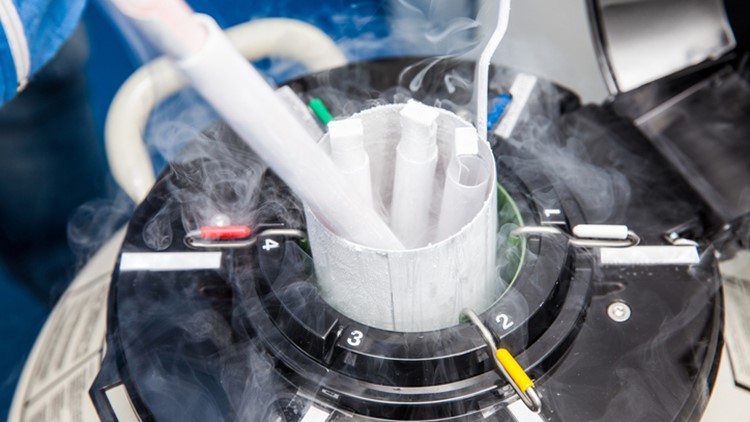ST. LOUIS – Mandy Bare has a Type A personality.
“Very Type A,” she said. “I like things to be organized and have lists and meet deadlines.”
Those traits have helped her build a successful career. She is a project manager at a large healthcare organization in St. Louis. Her work, though, has gotten in the way of a more personal deadline.
“I haven't met that right person yet,” she said.
Bare wants to have a family of her own one day. So, Type-A Bare started looking for a Plan B.
“Last year, I started thinking, ‘Oh my gosh. I'm almost 35. I don't have kids’” she said.
Bare decided to freeze her eggs just in case she has fertility issues in the future.
For months, she didn’t think about her eggs until she heard about what happened at two other clinics. In March, about 4,000 eggs and embryos were lost at a lab in Cleveland. In San Francisco, thousands more were lost. The exact causes are still under investigation.
Bare immediately needed reassurance about her own eggs.
“When I heard the stories that have been popping up around the country, I got a little nervous,” she said.
5 On Your Side wanted to get answers for women and families who rely on labs to store their eggs and embryos.
MCRM Fertility in Chesterfield let us into its lab.
Dr. Douglas Gliedt is the lab director. He showed 5 On Your Side the tanks where MCRM stores thousands of eggs and embryos. The tanks are filled with liquid nitrogen and the temperature must stay between minus-400 degrees and minus-150 degrees.
The tanks have prongs that monitor the temperature. The prongs are connected to an alarm, and when the temperature rises too high, the alarm sounds. The alarm calls Dr. Gliedt’s cell phone, and if he can’t answer, it rolls over to other lab workers’ phones. Dr. Gliedt said he overfills the tanks with liquid nitrogen as another precaution.
“There’s a lot of potential of error along the way, and we want to minimize that,” Dr. Gliedt said.
He, too, was surprised about what happened at the other two clinics. Now, he is taking steps to improve MCRM’s current storage, possibly adding more monitors on the storage tanks’ temperature gauges.
“I'm working with a company right now to maybe change up a little bit, add something to our current system,” Dr. Gliedt said.
Embryology labs face few federal regulations. However, there are organizations that provide standards for clinics through accreditation. One agency is the College of American Pathologists. It is investigating what happened at the clinics in Ohio and California.
“The CAP is working with those two labs to ensure the new procedures that they have will, in fact, be more failsafe and we'll have another re-inspection of those two labs to see if they've done everything we've asked them to do,” said Dr. Erica Behnke, a commissioner with CAP.
Dr. Behnke said CAP provides checklists for embryology labs and it does evaluations of its member labs.
She recommends that prospective patients need to be careful about which labs they choose. Also, ask about a disaster plan.
“Your disaster policy needs to be specific to your location and it needs to be address all the possibilities,” Dr. Behnke said. “They should ask questions, what happens if?”
Lab directors say many patients don’t ask these questions. However, after the incidents at the two labs, Bare immediately called MCRM.
“I reached out to my coordinator and she reassured me their tanks are monitored seven days a week,” Bare said.
Knowing those details made Bare feel more confident that, while she builds her career, she can push off the motherhood deadline.
“I just love kids,” Bare sad. “I've always loved kids.”
And, she feels her possible future family, who she has always planned for and dreamed about, are safe.
“It's always been two kids: an older boy with a younger girl. The typical American dream, right?” she said.



